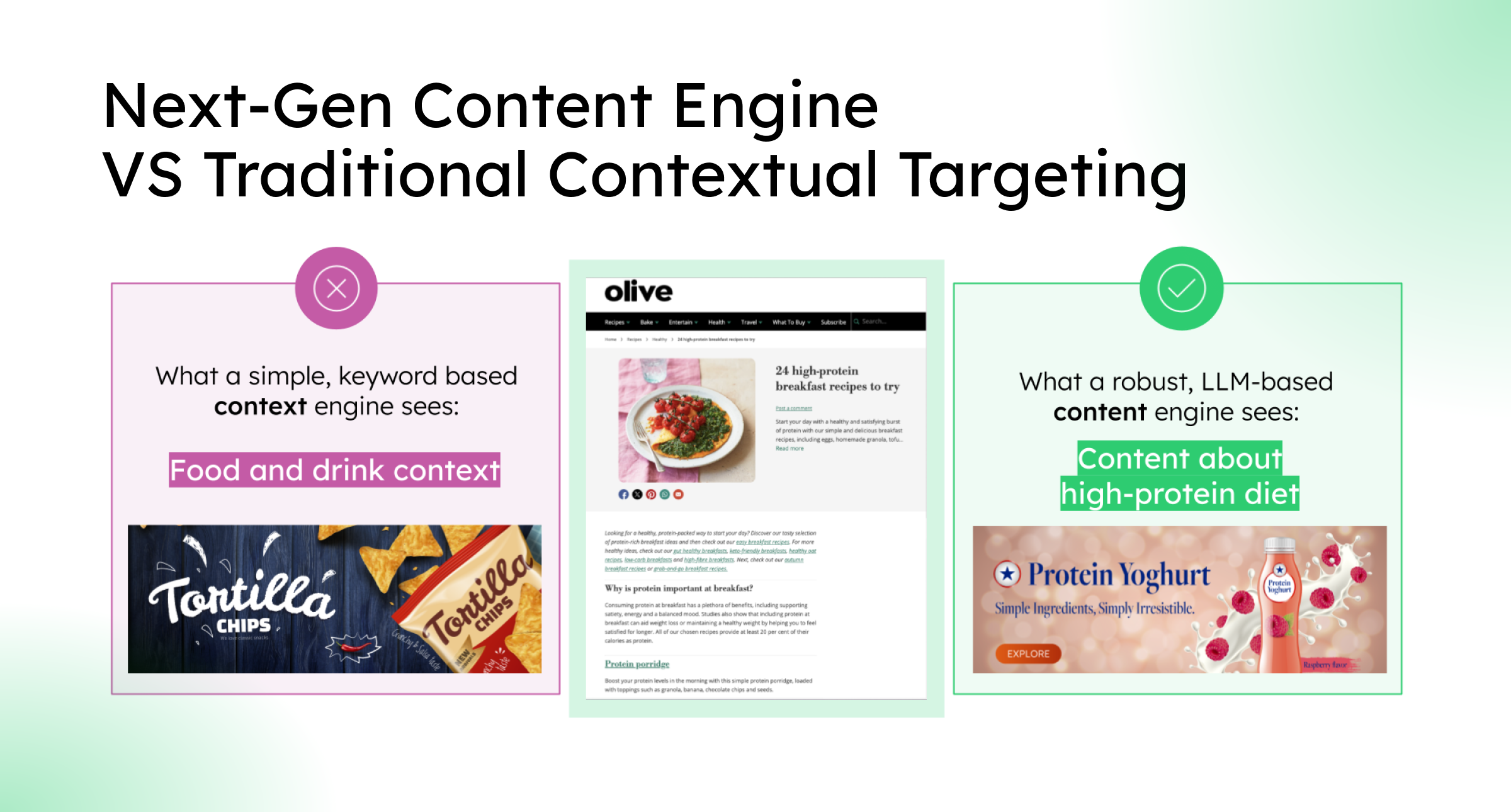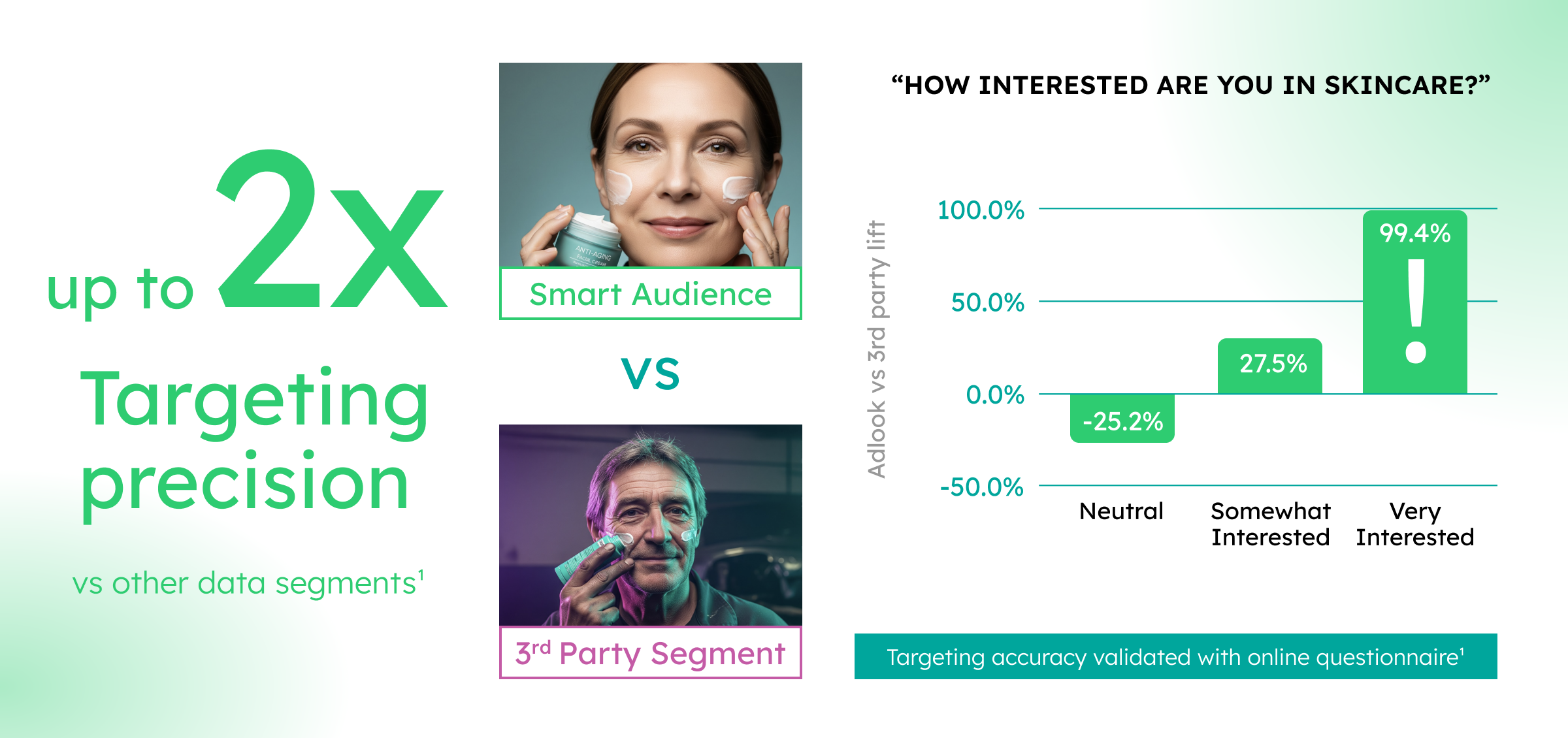
The digital advertising world has been abuzz with Google's demise of third-party cookies. But let’s be honest - the real tragedy isn’t their death. It’s the fact that we ever trusted them in the first place.
Behind the scenes of programmatic advertising lies a crumbling infrastructure:
Consider this: in our internal study of third-party socio-demographic data, we compared cookie-based audience segments (like "Women 18-24" and "Parents") against real survey results. The outcome?
Let that sink in: your campaigns - your budget - your creative strategy - are likely targeting the wrong people more often than not.
This isn't just a data quality issue. It's a strategic rot at the heart of programmatic advertising.
And the problem isn’t cookies. Cookies are just the messengers. The real problem is that the messages were junk. And the Open Web has been stuck targeting ghosts, shadows, and assumptions.
Which leads us to the big question:
What if we stopped trying to identify users, and instead started understanding them?
What if we stopped gluing together identity graphs and started decoding intent, interest, and emotion - straight from the content people are consuming?
That's the promise of next-gen targeting solutions. Not built on synthetic behavioral models or probabilistic matching. But on observable behavior, contextual depth, and AI-powered precision.
So we set out to challenge this with a simple hypothesis:
“NextGen targeting solutions will outperform third-party segments - not just in theory, but in practice - because they are grounded in real, observable behavior and context, not stitched-together identities.”
And as you'll see in the next sections. Not only is it possible, it's already happening.
When the digital advertising industry faced the impending deprecation of third-party cookies, many advertisers turned to contextual targeting as a privacy-compliant alternative. This approach, which aligns ads with the content of a webpage rather than user behavior, offered a way to maintain relevance without relying on personal data.
In our earlier study covered in my piece "From Signal Loss to Signal Gain," we evaluated the effectiveness of contextual targeting across various verticals. By surveying 3,600 users, we found that contextual targeting significantly outperformed broad, non-contextual placements in driving genuine user interest. Specifically, the lift in interest (users who answered “A lot”) varied between 16% and 82% across these categories.
These findings underscore the potential of contextual targeting to deliver relevant ads without infringing on user privacy. However, while contextual targeting addresses some of the challenges posed by third-party cookies, such as privacy compliance and brand suitability, it is not without limitations.
Context works - especially in high-scale verticals like CPG, Auto, and Retail.
But it’s still a proxy. It lacks nuance. It lacks flexibility.
That’s where AI-driven content-based targeting breaks through.
That’s where AI flips the model. Instead of chasing user IDs, it understands what people are doing, thinking, and feeling in the moment - through deep analysis of the content they consume. This approach leverages advanced machine learning and natural language processing to analyze content in real-time, considering factors like sentiment, tone, and the deep meaning of the content to infer user interest and intent more accurately.
In LLM we’re talking:
And when combined with Generative AI, we’re no longer limited to drop-down segment lists. You can literally prompt your audience:
“People interested in a healthy lifestyle and looking for ways to incorporate fitness and diet into their busy lives.”

This shift represents a significant leap forward from traditional contextual targeting, offering a more nuanced and dynamic approach to reaching audiences with precision. By that, advertisers can deliver more relevant and effective messaging to their audiences.
We didn’t just theorize our way through this. We built a head-to-head experiment to test the industry’s most uncomfortable truth:
Are we really reaching the right people or just paying to believe we are?
To do this, we built a “skincare-focused” audience with ContentGPT - our proprietary GenAI engine designed to analyze content using LLMs and derive rich audience signals based on semantics, sentiment, tone, and behavioral context.
In short: it understands what users are engaging with, and why - and dynamically builds audiences around that real-time, intent-driven behavior.
For comparison, we activated skincare segments from a leading third-party data provider — a well-known name, trusted by many global advertisers (who I won’t name here, but you’ve likely used them).
Both audiences were executed on the same DSP, with the same spend, same CPM bid, same format and geography. The goal? Let performance (not assumptions) speak.
On top of that, when running the survey we noticed two dependencies:

This wasn’t an edge case. The gap between legacy audience segments and AI-powered content intelligence isn’t theoretical anymore. It’s measurable. It’s repeatable. And it’s widening.
This study didn’t just prove a preference. It exposed a systemic issue: 3rd-party segments are no longer viable at scale for quality engagement in the Open Web.
It is a clear validation that real-time, AI-generated content segments don’t just perform better - they’re actually able to reach people who care.
Targeting isn't dead. Bad targeting is.
We don’t need to wait for Google’s final cookie verdict. We don’t need to reassemble fragile identity frameworks that barely worked before.
What we need is a mindset shift:
Because when we shift from assumptions to attention, from IDs to intent - we stop chasing users… and finally start connecting with them.

The last few days and weeks have brought a flurry of developments with potentially big implications for our digital lives.

Uncover 4 personal care shopper profiles in Brazil and how to activate campaigns with real data and behavior.

CTV CPMs are falling—Adlook reveals why signal gaps are to blame, and what the industry must fix to unlock real value.